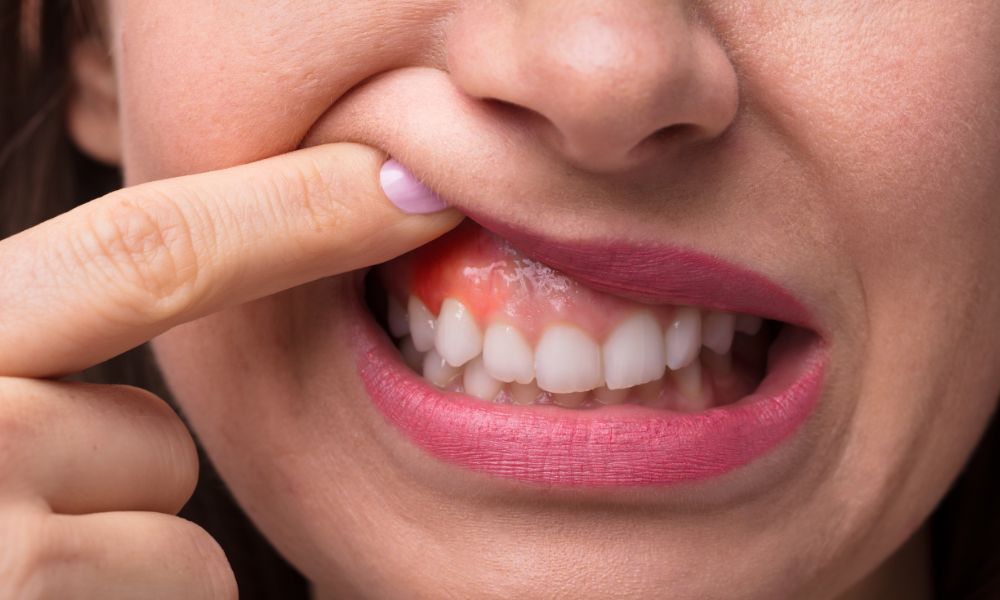Green Valley, AZ periodontal services help revitalize and rejuvenate gum health to improve tooth stability, support, and oral aesthetics. One such service that aims to enhance gum vitality is pocket reduction surgery. Also known as gingivectomy or flap surgery, this dental procedure aims at treating periodontal disease by reducing the depth of pockets between teeth and gums. This surgery is typically performed on patients with advanced gum disease, where the pockets have become too deep for regular cleaning methods to be effective.
Let’s explore this periodontal service further!
Understanding periodontal disease
Periodontal disease, also known as gum disease, is a chronic bacterial infection that affects the gums and bone supporting the teeth. It is a leading cause of tooth loss in adults and can have significant consequences for overall health. The disease progresses through stages, from gingivitis, a mild inflammation of the gums, to periodontitis, a more severe infection that damages the bone and tissue holding teeth in place. If left untreated, periodontal disease can lead to painful abscesses, loose teeth, and even systemic infections.
The need for pocket reduction surgery
Pocket reduction surgery is necessary when:
- Pockets are too deep for regular cleaning: Pockets that exceed 5 mm in depth cannot be effectively cleaned with regular brushing and flossing, making surgery necessary.
- Infection and inflammation persist: Despite non-surgical treatments if infection and inflammation continue, surgery may be required to remove infected tissue and bacteria.
- Bone loss and tooth mobility occur: Advanced periodontal disease can cause bone loss, leading to loose teeth; surgery helps prevent further loss and stabilizes teeth.
- Risk of tooth loss: Deep pockets and bone loss increase the risk of tooth loss; surgery can help save teeth.
- Impaired oral function: Deep pockets can interfere with chewing, speaking, and overall oral function; surgery can improve oral health and function.
- Aesthetic concerns: Exposed roots and receding gums can affect smile appearance; surgery can improve aesthetics.
- Systemic health risks: Untreated periodontal disease has been linked to systemic health issues, such as heart disease and diabetes; surgery can help mitigate these risks.

A guide to pocket reduction surgery procedure
The pocket reduction surgery procedure involves the following steps:
- Anesthesia: Local anesthesia is administered to numb the area, ensuring minimal discomfort during the procedure.
- Incision: A small incision is made in the gum tissue to access the pocket.
- Flap creation: A flap is created in the gum tissue to expose the pocket and surrounding bone.
- Debridement: Infected tissue and bacteria are removed from the pocket.
- Bone recontouring: The bone is reshaped to prevent future pocket formation.
- Flap closure: The flap is closed, and the gum tissue is repositioned.
- Sutures: Sutures are placed to hold the flap in position.
- Healing: The area is allowed to heal, and follow-up appointments are scheduled to monitor progress.
Post-pocket reduction surgery care
Immediate post-surgery (first 24 hours)
- Rest: Avoid strenuous activities.
- Pain management: Follow prescribed pain medication instructions.
- Bleeding: Expect some bleeding; apply gentle pressure with gauze.
- Swelling: Apply ice packs to reduce swelling.
- Diet: Stick to soft, cold foods and liquids.
Short-term recovery (first week)
- Medications: Take prescribed antibiotics and pain medications as directed.
- Oral hygiene: Avoid brushing or flossing the surgical site; use a saltwater rinse.
- Follow-up appointments: Attend scheduled appointments for suture removal and check-ups.
- Swelling and bruising: Continue using ice packs; bruising may occur.
- Diet: Gradually introduce soft foods; avoid hot, spicy, or hard foods.
Long-term recovery (2-6 weeks)
- Oral hygiene: Resume regular brushing and flossing.
- Gum sensitivity: Expect some sensitivity; use desensitizing toothpaste.
- Smoking: Avoid smoking; it can delay healing.
- Exercise: Gradually resume normal activities.
- Follow-up appointments: Attend scheduled appointments to monitor progress.
Pocket reduction surgery is a valuable treatment option for advanced periodontal disease. While it carries some risks, the benefits of improved gum health and increased chances of saving teeth make it a worthwhile consideration. Consult with a dental professional to determine if pocket reduction surgery is right for you.




